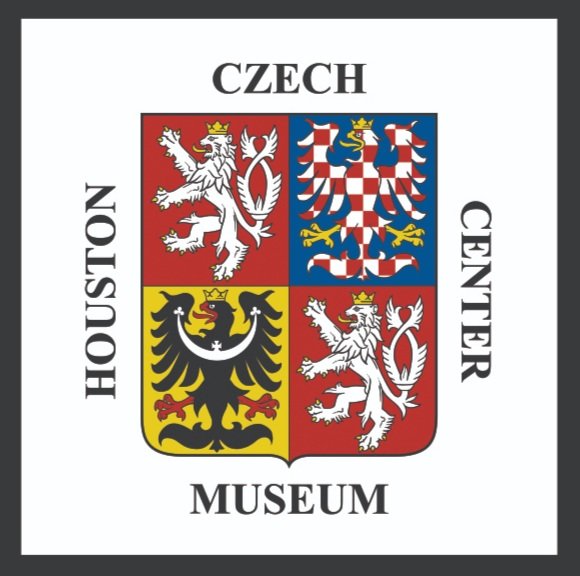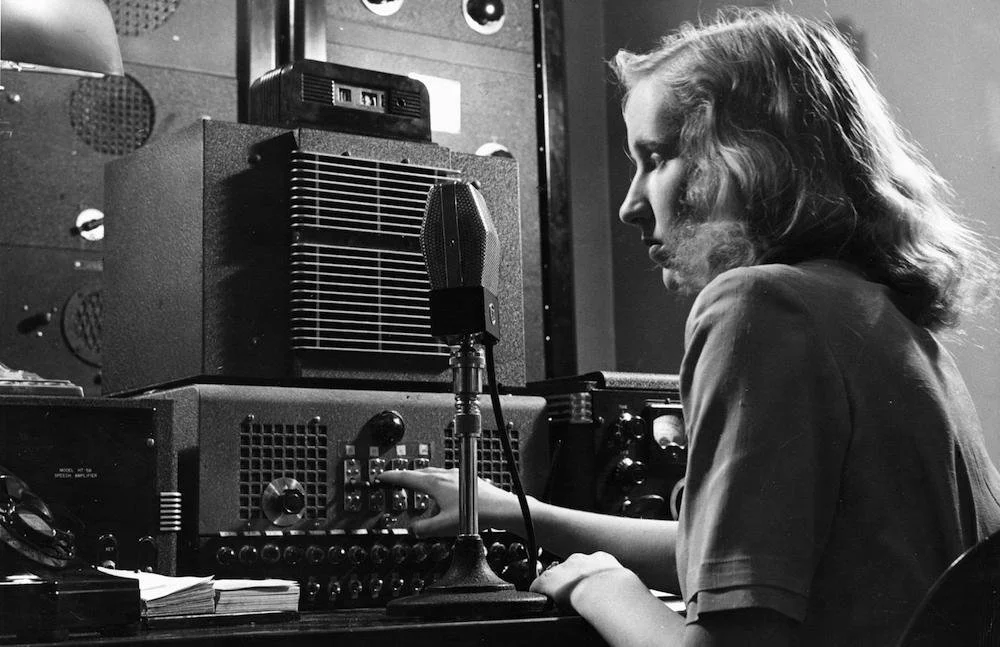Radio and its revolutionary effect were felt in Czechoslovakia just as it was in the rest of the world. It began with the first broadcasts, occurring before World War I, into the first Czech-produced program in late 1919. Of course, as radio technology progressed and advanced, its use as a medium for propaganda grew more and more robust. Despite its use in propaganda, radio also served as a tool to disseminate important information about the nation and the world at-large.
Jan °´ÇłŮÄ›°ů˛ą: Founder of Modern Czech Architecture
Jan °´ÇłŮÄ›°ů˛ą was an important figure in Czech architecture for his use of modern elements in his works, earning him the title of “founder of modern Czech architecture.” °´ÇłŮÄ›°ů˛ąâ€™s career began with the renovation of ÄŚervenĂ˝ Hrádek, using both neo-Gothic and Art Nouveau elements outside and inside, respectively. Despite being controversial in terms of culture and architectural style, °´ÇłŮÄ›°ů˛ąâ€™s life and career continued in success, culminating in the creation of his 1913 “masterpiece” the Museum of Eastern Bohemia. Throughout his life, Jan °´ÇłŮÄ›°ů˛ą continued to create and build works of great architecture.
Karel Zeman: Czech Film Director and Animator
Legendary Czech film director, screenwriter, artist, and animator, Karel Zeman is known for creating fantasy and science fiction films. His first major breakthrough occurred in 1943 while participating in a window-dressing competition in Brno, where he accepted a job offer to work for the Bata Film Studios in Zlin. After that, in 1945, Zeman began work on A Christmas Dream, then directed his first feature film, The Treasure of Bird Island, in 1952. His work is illustrious enough for a museum dedicated to his work, the Karel Zeman Museum in Prague.
JiĹ™ina Ĺ ľ±°ě±ô´Ç±ąĂˇ: Sociologist, Gender Studies Professor, and Dissident
The Bohemian Revolt: Battle and Execution
On November 8, 1620, the Bohemian army had lost the Battle of White Mountain, resulting in the Bohemian Revolt, which proved to have dire consequences on those who participated. For example, since the severity of punishment increased depending on the level of participation, those who held an official position or provided service had their property confiscated while the revolt leaders were given the death penalty. There were further consequences down the line which shaped Bohemia’s future.
Czech Cottage Culture
OldĹ™ich °łÜ±ôłóá˛Ô±đ°ě and the Czech Koruna
OldĹ™ich °łÜ±ôłóá˛Ô±đ°ě was a Czech artist and critic of the Communist Regime best known for his work on designing the current Czech banknotes. His career began in 1958 at the Academy of Arts, Architecture and Design in Prague. During his young life, his politically motivated art would get him arrested and the art almost destroyed since he negatively portrayed Communist leaders. After the collapse of the Soviet Union, OldĹ™ich °łÜ±ôłóá˛Ô±đ°ě was once again free to express his views through his art and was tasked with designing the bills of the Czech Koruna.
Czech Spa Cups
Spa cups were created for drinking natural spring water, supposedly endowed with healing properties. This cultural sipping cup began with a pig and its broken leg, which apparently recovered after rolling around in the mud from spring water, inspiring Teplice locals to soak in the water to cure their ailments. By the 19th century, the spa scene became popular enough to inspire studies and university courses. The spa cups themselves appeared in the early 17th century, made to taste the spring water and benefit from its healing properties.
A History of Czech Feminism
The once egalitarian, agrarian society of Bohemia became ruled by the Hapsburg Dynasty, causing a regression in women’s rights until Christianity helped improve their lives. The National Revival brought the creation of Czechoslovakia and greater rights for women. When communism came, rights improved in some ways and did not in others. The change to a capitalistic democracy brought further changes.
The Bohemian Revolt: Defenestration and War
The decision in establishing an emperor’s successor would lead to a conflict that would spark the Thirty Years’ War. The Bohemian revolt initially started off in favor of the Bohemians, but it damaged diplomacy. Victory in this conflict for either side would hinge on the battle that would take place at White Mountain.
Houska Castle
Houska Castle is a castle located in the Liberec region of the Czech Republic. The castle was built in the Gothic style during the second half of the 13th century, and later underwent a Renaissance modification in the late 1500s. This castle is particularly famous for the folklore, which is that it is built over a pit meant to be the entrance to Hell. Besides the folklore, the actual purpose of Houska Castle was to serve as an administrative center for Ottokar II’s royal estates.
LGBTQ+ Marriage In The Czech Republic and Slovakia
The former communist-controlled Czech Republic is now one of the most progressive countries regarding LGBTQ+ (same-sex or transgender) rights, but inequality remains. While civil unions are now recognized, same-sex marriage is illegal and is under review as of June 2023. However, the LGBTQ+ in Slovakia do not even have civil unions, let alone same-sex marriage, though there is the law of a “close person,” which is someone who is close to an individual. Just as in the Czech Republic, Slovakians are vying for same-sex marriage to be legalized.
Rudolf II: The Intellectual yet Disastrous Emperor
Rudolf II desired to unify Christendom in the Empire and tried to take a tolerant stance on religious issues. Though he was an ineffectual ruler, he had a love for academics that helped spur the Scientific Revolution. He was known as “the greatest art patron in the world,” and philosophers, painters, alchemists, astronomers, architects, and mathematicians came to Prague to work under his patronage.
Czech Cubism (Cubo-Expressionism)
The term Cubo-Expressionism was coined in the early 1970s to describe Czech avant-garde art in the 20th century, when elements of Cubism and Expressionism were combined. It was a revolt from earlier art forms with spiritual elements. Czech Cubism, as Cubo-Expressionism is also called, was applied to just more than art pieces, including furniture, objects, architecture, etc. One of the most famous Cubo-Expressionists is Pavel ´ł˛ą˛Ôá°ě, a Czech architect, designer, planner, professor, and theoretician.
Bertha von Suttner: the first woman to win the Nobel Peace Prize
Bertha von Suttner’s commitment to peace and anti-war movements created the building block to many significant changes in Europe. Unfortunately, the political figures and aristocracy she argued against ignored her warnings. For example, von Suttner warned governments and aristocracy of increased citizen involvement in affairs of war and even the use of nuclear weapons. Eventually, her ideas for peace were soon adopted post-World War II.
Mordecai Maisel: Jewish Influence in Prague
Mordechai Ben Šemuel Maisel was a businessman, philanthropist, Jewish community head, and builder of Prague’s Jewish town during the late 16th and early 17th centuries. He established a successful banking business and several silver and gold mines in Bohemia. Maisel’s financial success was instrumental to the tactical success of the Holy Roman Emperor’s forces during the Turkish Wars, which allowed him more financial freedoms and decisions that made him wealthier.
Meda Mladkova
Meda Mladkova was a patron of the arts who helped support Czech artists stuck behind the Iron Curtain. She trained to be a dancer but decided to leave Czechoslovakia after witnessing how terribly the Germans who remained in the country were treated at the end of the Second World War. Even when she met the Ministers of Culture and Education and the Director of the Nationa Gallery, she truthfully and successfully stood up for artistic freedom.
Hana Podolska: The "Coco Chanel" of Czechoslovakia
Hana Podolska was “the” fashion designer of the 1930s and 1940s in Prague. Her gowns and garments could be seen in well-known films worn by famous actresses, many magazines, and popular political figures. Before her life of fashion her father, who tragically died of tuberculosis, was an architect while her mother was a housewife. After moving to and growing up in Prague, Podolska worked with the local seamstress, which became the genesis for her fulfilled desire to be a fashion designer.
Charles IV: King of Bohemia and the "Romans"
Charles IV’s efforts helped to elevate the city of Prague to new heights, establishing it as the intellectual and cultural center of Central Europe. Yet, his reign was marked by political disagreements and failures to centralize the government. One major, yet brief, threat to Charles IV’s authority came from Louis IV, the excommunicated emperor Charles IV replaced. Another major aspect of Charles IV’s authority was the elevation of Prague as a major player on the world stage for centuries to come.
Jaroslava Brychtova (18 July 1924 – 8 April 2020)
Jaroslava µţ°ů˛âł¦łółŮ´Ç±ąĂˇ and Stanislav ł˘ľ±˛ú±đ˛Ô˛ő°ěý’s partnership of almost 50 years birthed some of the defining sculptural and architectural installations of the 20th century. They used their art as a form of political resistance and were inspired by early 20th-century Czech Cubism and metaphysical philosophy to work with abstraction.






